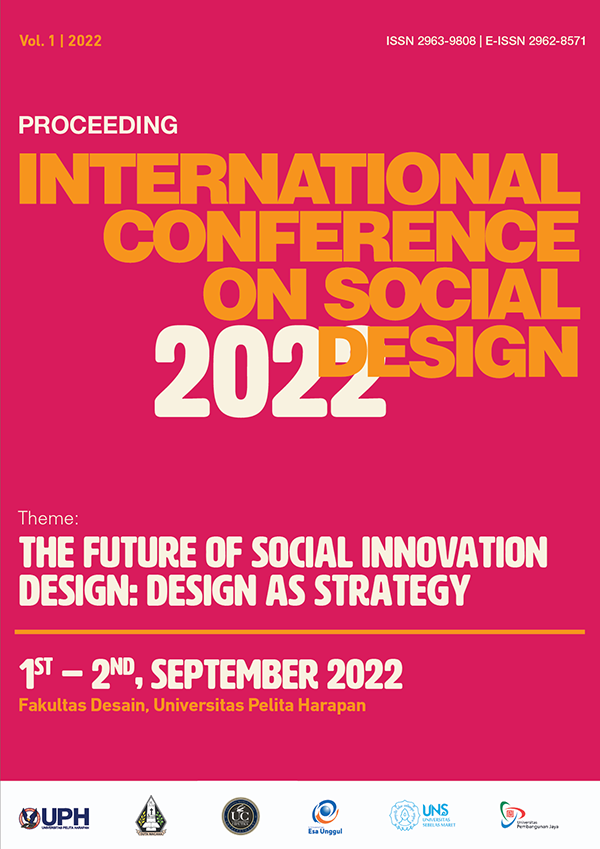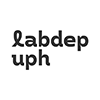Exploration of Natural Dye from Indonesia Plants on Children’s Clothing Design
Abstract
This design uses Indonesian plants to process into natural dyes for fabrics. This design is based on the concept of eco-design for children’s fashion products. The use of synthetic dyes pollutes not only the environment but also living organisms. The waste produced is liquid waste from the coloring process due to the use of chemicals. This is not only in the adult fashion world but also in the children’s fashion world. The fashion industry, show that children’s fashion products have a large target market, and it shows that children’s fashion product has opportunities in the development of the fashion industry. The use of natural dyes, which are not yet widely found in the world of children’s fashion, with the development of the use of natural dyes becoming a new development in the world of children fashion. The use of natural dyes can alternatively become a means of decreasing the use of chemical dyes. Natural dye has the potential to produce a variety of new colors that are applied to children’s clothing.
References
Agriani, L. (2019). “Potensi Bunga Telang Sebagai Pewarna Alami Pada Berbagai Pangan”. Makassar.
Annistri, A. (2020). “6 Kota Penghasil Batik di Indonesia, Keindahannya Memukau Dunia“. https://www.cekaja.com/info/kota-penghasil-batik-di-indonesia
Arohman, R. (2017). “Pemanfaatan Ekstrak Kulit Akar Mengkudu Sebagai Pewarna Tekstil Pada Kain Katun”. Palembang.
Atika, V. Salma, I. R. (2017). “Kualitas Pewarnaan Ekstrak Kayu Tenger”. Yogyakarta.
Bibiche, C. (2020). “Teinture naturelle aux pelures d’Oignons”. Retrieved from https://www.youtube.com/watch?v=YG7bm1pu0FU&t=62s.
Handayani, P. A., Maulana, I. (2013). “Pewarna Alami Batik Dari Kulit Soga Tingi Dengan Metode Ekstraksi”. Semarang.
Kontan.co.id. (2020). Ada 1.785 koperasi dan 16.313 UMKM terdampak pandemi Covid-19. https://keuangan.kontan.co.id/news/ada-1785-Koperasi-dan- 16313-umkm-terdampak-pandemi-covid-19
KrÌŒiÌzÌŒovaÌ, H. (2015). “Natural dyes: their past, present, future, and sustainability”. Czech Republic.
Kurniawati, B. D., Nunuk, G. M. (2015). “Pemanfaatan Cengkeh untuk Pewarnaan Kain”. Surabaya.
Leman, F.M., Soelistyowati., Purnomo, J. (2020). “Dampak Fast Fashion Terhadap Lingkungan. Universitas Ciputra. Surabaya.
Ma’alhunah, F., Hendrawan, A. (2019).” Pengolahan Limbah Kopi Arabika Sebagai Pewarna Alam Pada Produk Fesyen”. Bandung.
Pranoto, F. (2017). “Limbah tekstil mengandung bahan - bahan yang Berbahaya Bila Dibuang Kelingkungan”
Pressinawangi, R. N. (2014). ”Eksplorasi Teknik EcoPrint Menggunakan Limbah Besi Dan Pewarna Alami Untuk Produk Fashion”. Bandung.
Pujilestari, T. (2015). “Sumber dan Pemanfaatan Zat Pewarna Alami untuk Keperluan Industri”. Yogyakarta.
Septiningsih, W. (2017). “Perancangan Desain Komunikasi VIsual Filosofi Surjan Jogja Menggunakan Metode Design Thinking”. Universitas Jenderal Soedirman Purwokerto.
Utari, H. (2013). “Studi Pewarnaan Alami Kunyit Menggunakan Fiksator Tawas, Tunjung, dan Kapur”. Malang.
Ütebay, B., Çelik, P., Çay, A. (2020). “Textile Wastes: Status and Perspectives”. Ege University. Turkey.





1.png)
